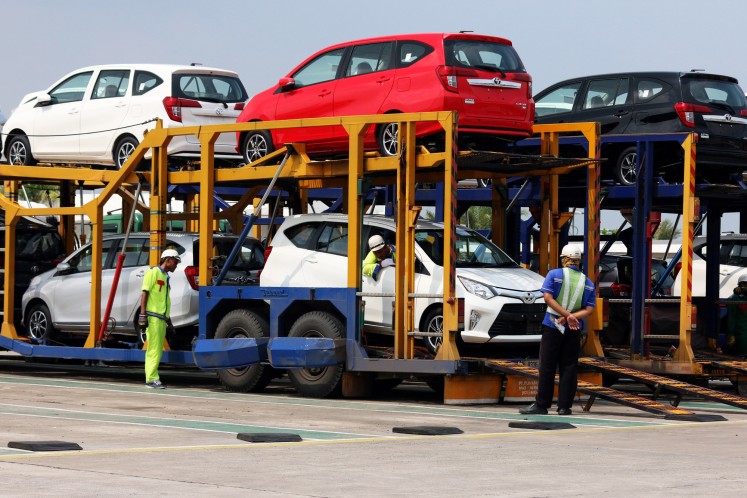Self-driving cars could be on US roads by 2020
In the ground-breaking SARTRE Project, drivers can multi-task behind the wheels of their own cars
Change Size

I
span class="inline inline-none">In the ground-breaking SARTRE Project, drivers can multi-task behind the wheels of their own cars. Each vehicle driver can join or exit with their car from a road train and maintain the flexibility of individual transportation for onward travel during a road trip.
Cars that drive themselves could be on US roads by the end of this decade. But don't take your foot off the pedal just yet.
Automakers, universities and others are at various stages in the development of autonomous cars.
Google is testing some in California. General Motors recently announced that its 'Super Cruise' system, which uses radar and cameras to steer and stop a car, could be on Cadillacs by the end of this decade. And Nissan has boldly promised that it will have an autonomous driving system by 2020.
'This is not a Star Wars technology. This is a technology that's becoming more and more reliable,' Nissan CEO Carlos Ghosn said recently at the Detroit auto show.
But there are still a host of issues to work through before there's a driverless car in every driveway. State laws requiring a licensed driver at the wheel will have to change. Insurers will have to determine who's at fault if a self-driving car crashes.
Highways will need to accommodate cars with and without drivers. And auto companies will need to ensure that cars' on-board computers can't be hacked.
In a recent report, consulting company Navigant Research estimated it will be at least 2035 before a majority of vehicles sold worldwide will be able to drive themselves.
Navigant predicts that technology will come in bits and pieces ' first self-parking cars, then systems to help drivers navigate traffic jams, then cars that can cruise by themselves on a highway ' and will take some time to migrate from luxury cars to more mainstream brands.
'The role of the driver of a vehicle will evolve to be more like that of a pilot in an aircraft,' the company said in its report.
Autonomous cars are moving from pipe dream to reality thanks to rapid advances in technology. Lane-departure warning systems, for example, first appeared a decade ago. They typically used one camera, mounted on the windshield, to warn drivers if they swerved out of a lane. Newer systems are far more complex.
Now, multiple cameras and radars can detect pedestrians and avoid them by telling the car to apply the brakes. Some cameras can even read street signs.
And some lane-departure systems not only warn the driver with a beep or a buzz but also gently nudge the steering wheel to make sure the car stays in the middle of its lane. The story is similar with adaptive cruise control, which first appeared in the mid-1990s. Back then, it could maintain a safe distance from a car directly in front of it at highway speeds.

Now, more advanced adaptive cruise control systems can monitor cars in other lanes, work in slower, stop-and-go traffic and even apply the brakes and halt the car.
Satellite-based navigation systems have also become far more accurate in the last decade, which is key to developing self-driving cars. Some systems can already detect traffic jams and suggest alternate routes. Navigant predicts future systems will be able to give turn-by-turn directions to the car instead of the driver.
Technology isn't perfect. Amnon Shashua, the co-founder of Mobileye, a Dutch company that writes software for automotive cameras, says there are still some situations in which humans outperform computers.
At a four-way stop, for example, a driver can crane his neck, scan for traffic in any direction and quickly determine the speed of any oncoming vehicles. So far, cars can't mimic that, Shashua said.
But even as the research and development continues, some autonomous cars are already being tested. Last year, British auto supplier and engineering firm Ricardo successfully led an autonomous vehicle demonstration near Barcelona, Spain.
One vehicle led four others ' three Volvo cars and a truck ' that drove themselves for more than 120 miles. The cars stayed 20 feet from each other and traveled at 53 miles per hour.
Ricardo's US President Tom Apostolos says the company believes such platoons will be among the first applications of self-driving technology. A farmer could drive a lead vehicle and run four self-driving combines behind, for example, or a logging company could run a convoy of trucks in a remote area.
'I think it will be in a place where you have a safer, more controlled environment,' he said.
Highway platooning could follow, but that is fraught with questions. Roy Goudy, a senior principal engineer at Nissan's North American technical center, said autonomous cars can react much more quickly to potential hazards than cars being driven by people, so it would be difficult to have both on the road at the same time.
'What are the rules in that environment, and what do we do to enforce those rules?' Goudy said.
Good question. So far, the rules have yet to be established. Only three states ' Nevada, Florida and California ' and the District of Columbia have authorized testing of automated cars on their roads. Other states, including Michigan, could pass laws soon. The federal government hasn't said when it might issue any regulations.
Despite all the uncertainties surrounding autonomous cars, many agree on their benefits.
David Strickland, head of the National Highway Traffic Safety Administration, says self-driving cars could potentially save thousands of lives, since human error is currently a factor in as many as 90 percent of traffic deaths. Driverless cars could bring order to clogged highways, reduce emissions by shortening travel times, and give more independence to the elderly and the disabled.
' Photos by AP/The SARTRE Project









